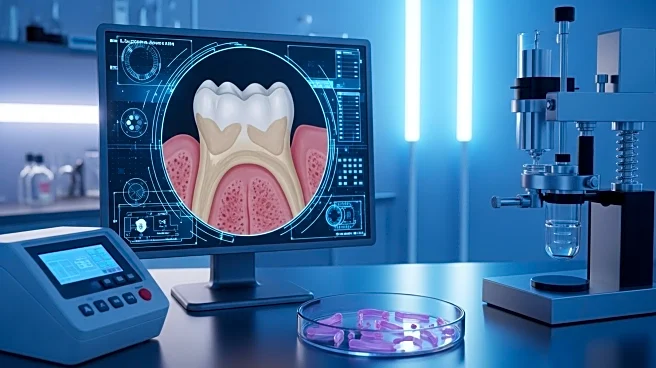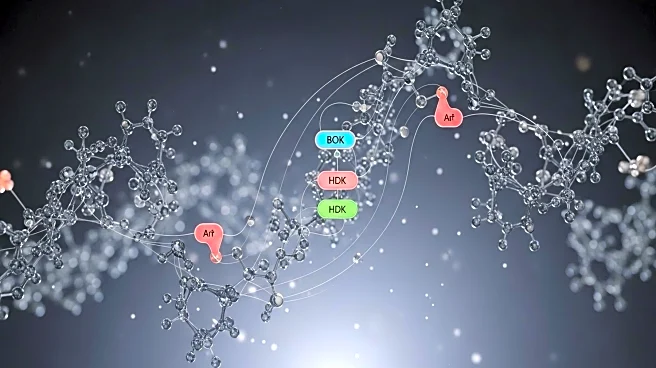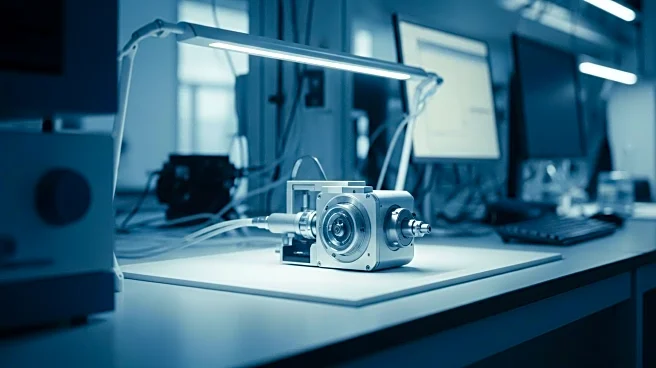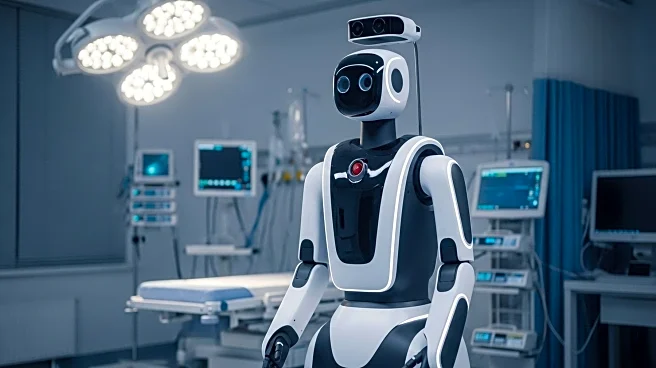What's Happening?
Researchers at Science Tokyo have identified two distinct stem cell lineages responsible for forming tooth roots and the alveolar bone that anchors teeth in the jaw. Using genetically modified mice and lineage-tracing methods, the team uncovered how specific signaling pathways direct stem cells to specialize during tooth development. This discovery provides valuable insights that could advance the field of regenerative dentistry, potentially leading to treatments that can regrow lost teeth and surrounding bone structures.
Why It's Important?
The ability to regenerate teeth and bone represents a significant advancement in dental science, offering the potential to replace artificial substitutes like dental implants and dentures with natural solutions. This discovery could lead to innovative stem-cell-based therapies that restore lost teeth more completely, improving both function and appearance. The findings also contribute to a deeper understanding of the complex processes involved in tooth and bone formation, which could inform future research and treatment strategies in regenerative medicine.
What's Next?
The research team plans to further investigate the molecular and cellular mechanisms that guide stem cell differentiation in developing teeth. This could involve exploring the potential for these stem cells to be used in clinical applications, such as developing new regenerative therapies for dental pulp, periodontal tissues, and bone. Collaboration with other institutions and researchers will be essential to translate these findings into practical treatments, potentially revolutionizing the field of dentistry.
Beyond the Headlines
The ethical implications of using stem cells for tooth and bone regeneration should be considered. As these therapies become more feasible, issues related to consent, accessibility, and the potential for genetic manipulation may arise. Ensuring that these advancements are accessible to all patients, regardless of socioeconomic status, will be crucial in maximizing their benefits. Additionally, the long-term impact of these therapies on dental practice and healthcare systems should be addressed.











